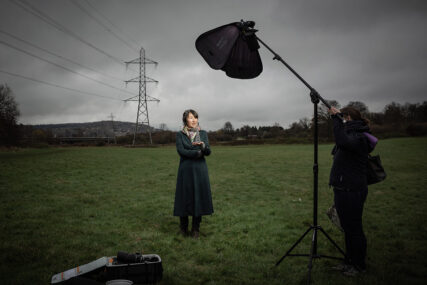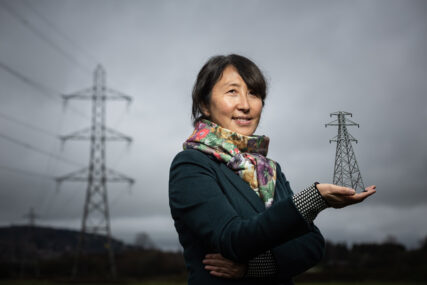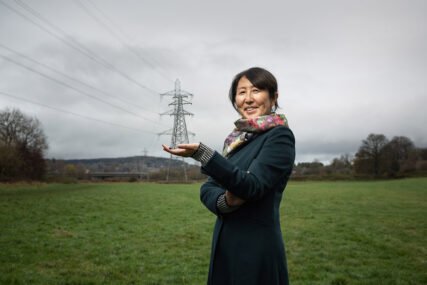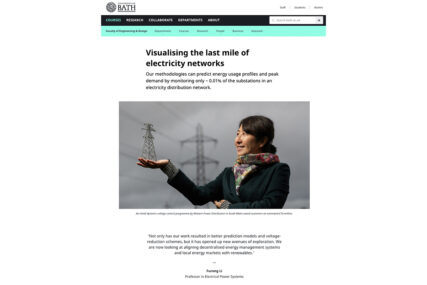When communicating an abstract or technical idea, creative photography is vital for engaging your readers.
In this case study I’ll share some insights of a shoot I undertook for University of Bath late last year.
Background.
We needed to illustrate the university’s research into managed power distribution and supply, in particular the regulation of the “last mile” from the national grid into your home. You might not think the subject electrifying, but actually it’s interesting research and vital to anyone who uses electricity!
The research by Furong Li, Professor in Electrical Power Systems, is looking at how mass data can be used to adjust supply to the home according to real-time demand. Currently the supply is regulated using relatively old data and inflexible systems.
You can see the article here, but in this post I’ll go into the background to the photography.
Concept.
When I was approached by the university’s web content editor, she already had the idea to use a model of a pylon, while I suggested we match that up with a location where a real pylon could reinforce the initial idea.
Furong came up with the location and so we met on a slightly dreary November morning to make the pictures.
Actually the dreariness helped because I wanted to use portable lighting to make the shots more three-dimensional, and the clouds added drama.
Execution.
Having got some basic headshots in the bag “just in case”, we then played with various ideas and positions to ensure there was a good variety of images to choose from; not only for the initial article, but also for other uses down the line.
Photographers often forget to shoot “around” the subject or the idea, leaving the client little to choose from should an initial layout change, or when the shots are needed in different media. I’ve just shown you a couple of the other shots here, with the final choice being visible in the article itself.
This was no huge production; the ideas were simple and effective and the final results are eye-catching. Perfect for an article you want people to notice in a sea of online content.




